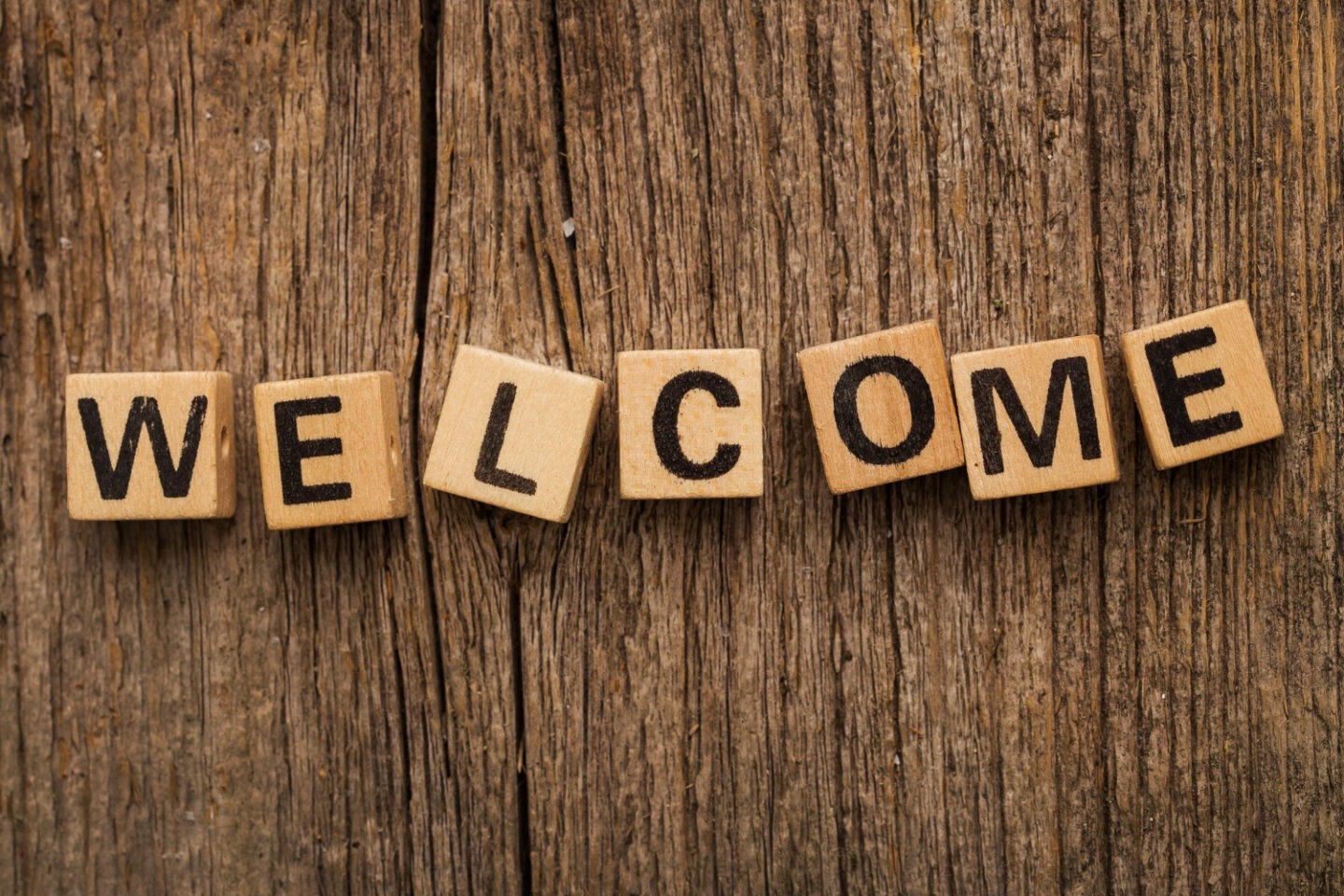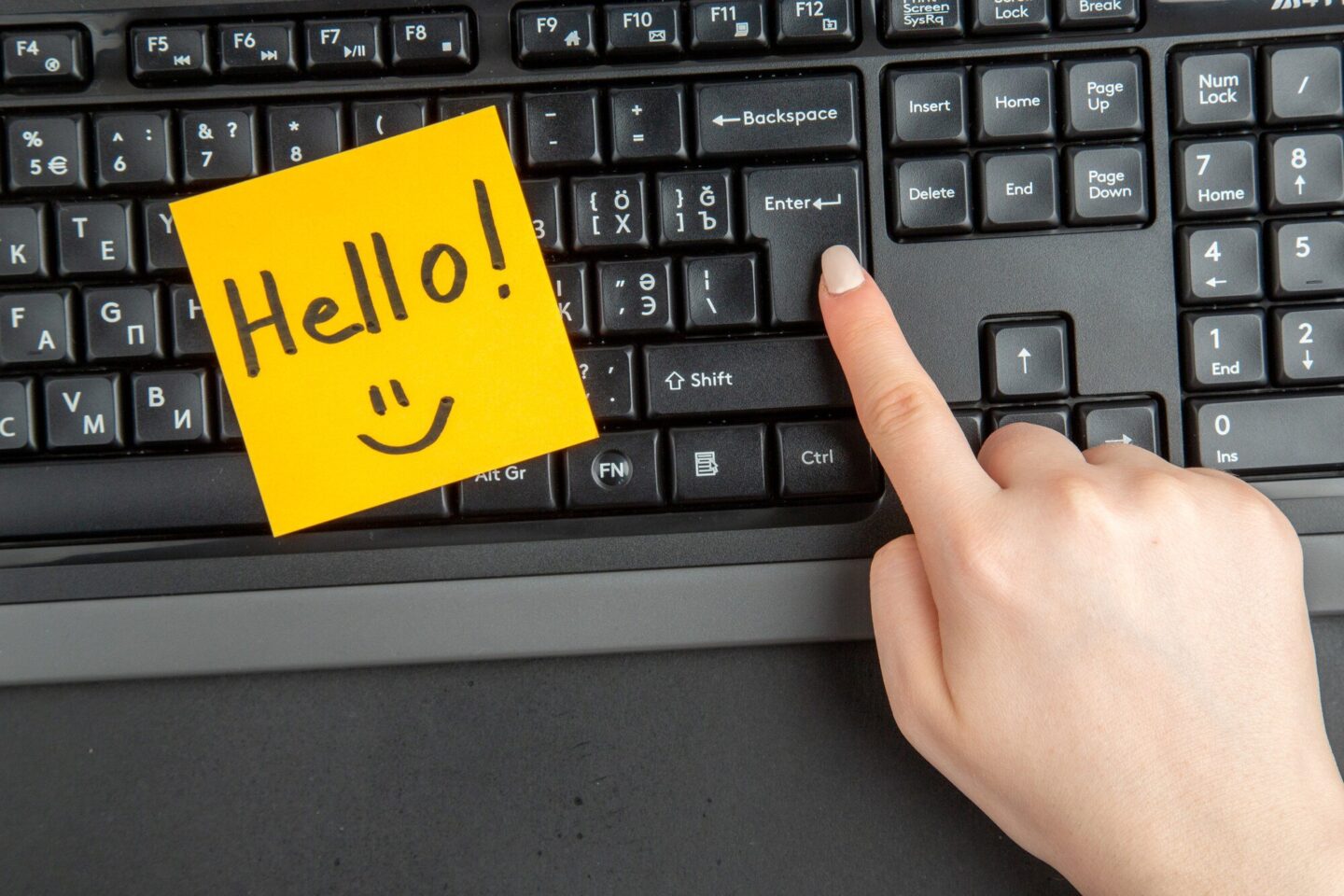Crafting the Perfect Welcome-to-the-Team Email for New Employees [+ Templates]
You’ve just scored an awesome new hire, and it’s time to write them a welcome to the team email. Are you nervous? You might be. You probably spent a lot of time and effort hiring them — and you likely know 70% of new hires decide if a job is the right fit for them within their first month!
A lot is riding on those first few experiences with a new team and company, but don’t worry! Whatever kind of new employee welcome email you’re working on, we can help.
A welcome email to new employees is like the overture of onboarding. It sets the tone. After all the business of offers and paperwork, this is a first chance to communicate company culture before your new starter jumps in — and give them a feel for what to expect in their onboarding and beyond.
Given how important this kind of up-front communication is, it’s shocking how often it is ignored in the onboarding process, left up to hiring managers to figure out, sent intermittently, or not at all.
Whether it’s laying down the groundwork of expectations, whisking away first-day jitters, or simply sparking excitement, these first emails and messages are pivotal. They deserve a prominent spot in your strategy.
Let’s dive into why welcome emails and messages matter, explore the varieties that can make each new employee feel like part of the team, share a few onboarding email examples, and offer some advice on how you can craft them to perfection.

Image by Racool_studio on Freepik
How important are welcome emails when onboarding?
Very! Next question?
Seriously though. These early communications aren’t just niceties; they’re necessities. Your new hire is likely just as nervous about the first day as you are—or more so—and you may never have their attention so fully again. They will be looking VERY carefully at what comes their way in these first missives, and what you share will have an outsized impact. It’s a one-in-an-employment-lifetime change to make a first impression.
- Set the Culture Tone: A stellar welcome email shapes a new hire’s first insider impression of your company. The candidate experience is past and now they’re experiencing how you actually practice your culture. Does reality match the hype? Make these messages count, and new hires are more likely to feel positive and pumped about what lies ahead.
- Spark Immediate Belonging: Before they even step through the door, a welcome email can make new hires feel like they matter and are valued. This sense of belonging can significantly dial down the “new job jitters” and turn up the excitement.
- Create an Informational Bridge: From dress codes to parking codes, a welcome email can pack in all the practical info that ensures your newbie doesn’t feel lost but feels ready to hit the ground running.

Image by krakenimages.com on Freepik
Kinds of Welcome Emails
Think of the welcome email not as a solo performance but as the opening note in an ongoing symphony of communication.
And while we’re diving into the specifics of “welcome to the team” emails here, remember: these don’t even have to be emails! They could as easily be text messages, app messages video snippets, or even handwritten notes. What they SHOULD be is just one part of your onboarding checklist — and part of a broader, dynamic conversation to transition your candidate to a team member.
Maybe instead of an email, your message is a flow of shorter messages— part of an ongoing stream of communication that you can automate in a tool like Enboarder that shares information and onboarding documents in a manageable flow.
Let’s break down the types of welcome emails you can deploy to turn those first-day jitters into first-day excitement. Whether you set this up as a series or a single email, use it to ensure a better new-hire employee experience.
“Welcome to the Company!”
- From: HR
- To: New Employee
- When: Preboarding Stage
This is the official “hello” from the heart of the company—the HR department. It’s more than just a friendly wave; it’s the gateway to the organization, offering a broad overview of what the new hire can expect. This email often includes things like:
- Demonstration of company culture through tone.
- Key policies and initial paperwork requirements.
- What to expect in the first week, including any preboarding tasks that need completion.
- Questions to help fuel future “Wow” moments from the team, like favorite snacks and activities.
“Get Excited for Day 1!”
- From: Hiring Manager or Department Head
- To: New Employee
- When: Preboarding Stage
Personalized and warm, this email comes straight from the hiring manager or department head. It’s less about policy and more about people. It might include:
- Brief insights into team dynamics and ongoing projects.
- Direct invitation for any preliminary questions or discussions before the start date.
“Welcome to Our Team!”
- From: Colleagues and Peers
- To: New Employee
- When: First Day
On the first day, what better way to feel welcomed than getting a flow of upbeat email from your new colleagues? This less formal, more personable sort of email helps forge initial connections and might include:
- Warm welcomes from individual team members.
- Links to their employee connection cards to learn more about them.
- Personal insights, advice, or fun facts to break the ice.
- Invitations to join lunch or coffee breaks to start building relationships.
“Let’s Warmly Welcome…”
- From: Hiring Manager
- To: Company
- When: First Week
This type of intro is crucial for integrating the new hire into the broader company landscape. The hiring manager introduces the new employee to the rest of the company, possibly including:
- The new hire’s professional background and role within the team.
- Encouragement for other employees to introduce themselves.
- Any company-wide events or meetings where the new hire will be involved.

Image by krakenimages.com on Freepik
Personal vs. Automated Welcome-to-the-Team Email Messages
While automation in onboarding can ensure no one slips through the cracks, personalization makes the welcome feel heartfelt and genuine.
Here’s where balance comes into play:
- Automated messages: ensure all logistical and procedural content is communicated efficiently and consistently. They’re great for standard information like policies, procedures, and paperwork.
- Personalized messages: reflect the human side of your organization. They adapt to the individual’s role, interests, and specific team dynamics, making each new hire feel uniquely welcomed.
Both have their place, and the best onboarding experiences skillfully blend the two. Automated emails can carry the heavy lifting of compliance and standard procedures, while personalized messages can cater to making emotional and relational connections that bring new hires into the fold.
Alternatives to Email Welcome Messages for New Hires
Wait, you might be thinking. Email? Isn’t that so 2010?
As we said above — an email isn’t the only option for your new hire welcome communications. It’s still pretty common, and it can be handy to get all your thoughts pulled together in the key emails we mentioned above, but a lot of the tasks you need to get checked off in the pre-boarding period are better conveyed as friendly periodic messages sharing new information and engaging prompts.
Here are a few of the innovative ways you can welcome new hires that go beyond the standard email. And though we offer some employee onboarding email templates below, they can be adapted to shorter formats!
Instant Connection: Messaging Platforms: Why wait for an email to land when you can ping a welcome directly into their daily workflow? Using platforms like WhatsApp, Teams, or Slack for your welcome messages not only speeds up communication but also integrates new hires into their teams right from the start. These platforms support instant, informal interactions that can make new employees feel at home quicker and provide a real-time lifeline for any first-day questions they might have. A note of caution, though. Not every employee will have access to these channels until their first day or later — if you plan to use them, make sure they are able to see and interact with them!
A Personal Touch: Video Welcome Messages: Imagine the impact of opening a welcome message that isn’t just text but a smiling face. Video messages are a dynamic way to convey warmth and hospitality that text alone can’t match. Whether it’s quick hellos from the team, a tour of the office, or a personal greeting from the CEO, video can create a memorable first impression and set a friendly tone.
Direct to Their Pocket: SMS and Mobile Messages: For immediacy and personal touch, SMS messages can be a powerful tool. Sending a brief, thoughtful welcome message directly to a new hire’s phone can bridge the gap between professional and personal, showing that your organization values direct and open communication.

3 Best Practices and Tips for New Starter Emails
Crafting the perfect welcome email is an art that balances timing, content, and continuity. Here’s how you can optimize these communications to foster lasting engagement from day one.
Timing of the Email: The best time to send a welcome email is immediately after the offer is accepted. This initial touch should then be followed by more detailed communications as the start date approaches, ensuring the new hire feels continuously supported and informed.
Follow-Up Communications: Don’t let the welcome message live in a vacuum. Flank the engagement with follow-up emails and a flow of digestible messages that slowly prepare them for their first day, week, and month. Use these communications to provide more detailed information about onboarding processes, introduce them to their buddy or mentor, fill out forms, and remind them of upcoming tasks.
Feedback Loops: Invite feedback on the onboarding experience right from the start. This not only helps you refine your processes but also shows new hires that their opinions are valued. Simple surveys after the first week or month can provide insights into their initial experiences and any areas needing improvement.
Anatomy of an Effective New Employee Welcome Email
A well-crafted welcome email can set the stage for a successful onboarding experience. Here are the key elements that should be included to ensure every new hire feels informed and excited to start.
- Personalized Greeting: Begin with a personal touch. Address the new hire by name and express genuine excitement about having them on board. A personalized greeting can make all the difference in making them feel truly welcomed.
- Introduction to the Company: Provide a brief introduction to your company’s mission and values. This helps new hires align their personal goals with the organizational culture from day one.
- First-Day Quick Start Guide: Ease those first-day jitters by outlining exactly what they can expect on their first day. Include practical information like start time, dress code, parking, and who to ask for upon arrival.
- Onboarding Schedule/Agenda: Give them a clear outline of their onboarding process. What will their first week look like? Who will they meet? What training sessions are scheduled? This helps manage expectations and reduce anxiety.
- Building Networks and Connections Introduce them to key contacts within the company who can assist them during their onboarding. Knowing who to turn to for help can make a big difference in how quickly a new hire feels integrated.
- Words of Encouragement: End the email on a high note with words of encouragement. Reinforce the idea that they were chosen because you believe in their abilities and potential.

8 New Employee Onboarding Email Template Examples
Crafting the perfect welcome email involves a blend of warmth, information, and anticipation. Here are a few onboarding email examples and new employee onboarding email templates to help you nail that first impression with both formal and informal tones.
Examples of ‘Welcome to the Company’ Email from a Manager or HR
| Subject: Welcome to [Company Name]! Dear [Employee’s Name], Welcome to [Company Name]! We are thrilled to have you join our team and look forward to the skills and perspectives you will bring to our organization. As part of your onboarding, you will receive detailed insights into our company policies, culture, and the exciting projects you will be involved with. Please find attached the necessary documents to get you started. We are committed to supporting your professional journey and ensuring a seamless integration into our dynamic team. Warm regards, [Your Name][Your Position] | Subject: Guess Who’s Joining [Company Name]? Spoiler: It’s You! 🎉 Hey [Employee’s Name], Big news: You’re now officially part of the [Company Name] crew! Get ready for some serious innovation, endless coffee, and maybe a few ping-pong championships. 😄 Before you dive in, check out the attached guide to find your feet. It’s got everything from your first-day agenda to how we do things around here. Can’t wait to see you crush it with us! Cheers, [Your Name][Your Job Title] |
Examples of ‘Excited to Have You Start’ Email from Manager
| Subject: Your Start Next Week. Dear [Employee’s Name], As we approach your start date, I want to personally welcome you to [Company Name]. Your unique skills and experiences are precisely what we need to drive our team forward. Please find below/attached a detailed itinerary of your first week with us by the end of this week. We have tailored your onboarding to ensure a seamless integration into our team. Looking forward to your fresh perspectives and dynamic approach. Warm regards,[Your Hiring Manager’s Name][Position] | Subject; 🌟 The Countdown Begins! Can’t Wait for You to Start! 🌟 Hey [Employee’s Name], Just a few days to go, and you’ll be rocking it with us at [Company Name]! We’re super excited and have some cool projects waiting for you. 😊 We’ve got a bunch of things planned to get you settled in smoothly. Expect a mix of fun and fundamentals in your first week. Also, coffee’s on me on your first day! We’ve put all the fine details below. Let me know if you have any questions. Cheers and welcome![Your Hiring Manager’s Name][Position] |
Examples of Peer ‘Welcome to the Team’ Email
| Subject: Your New Adventure with [Company Name] Begins Soon! Dear [Employee’s Name], As the [Department] team’s [role] I am personally delighted to welcome you to [Company Name]. Your expertise in [Employee’s Field] is highly anticipated, and we are eager to see the contributions you will make. To learn a little about me, you can check out my connection card, here. If you have any questions as you’re settling in, do not hesitate to reach out. Looking forward to our journey together, [Your Name][Your Position] | Subject: Can’t Wait to Get Started? Neither Can We! Heya [Employee’s Name], Just a quick shout-out to say welcome to the team! I’m [Name] and I [job function]. I can answer any questions you have on [expertise.] We’re all so psyched to have you coming on board and can’t wait to get the ball rolling once you’re settled. Here’s my connection card [link] to learn a few more fun facts about me. If you have any questions, hit me up anytime! I’m so excited to get to know you! See you soon! [Your Name][Your Position] |
Examples of Introductory Welcome Email
| Subject: Introducing Our Newest Team Member: [Employee’s Name] Dear Team, Please join me in welcoming [Employee’s Name] as our new [Employee’s Job Title] in the [Department]. With extensive experience in [Field/Industry], [Employee’s Name] is poised to bring valuable insights and drive initiatives that support our strategic goals. {Info on their background and new responsibilities.] I encourage you to introduce yourselves and help [Employee’s Name] feel at home in our professional family. Best, [Your Name][Your Position] | Subject: Meet Our Latest Star Player: [Employee’s Name]! Hey Team, Big news! [Employee’s Name], a total rockstar in [Field/Industry], has just joined us as [Employee’s Job Title]. {Brief bio and what they’ll be doings.] Drop by, say hi, and let’s show [Employee’s Name] how we roll at [Company Name]. Welcome parties, team lunches, and spontaneous brainstorming sessions are all fair game! Catch you later, [Your Name][Your Job Title] |
Leveraging Technology to Enhance Welcome Emails
The right onboarding software can transform how you approach onboarding new hires and make the bridge between candidate and new starter a breeze. Onboarding software like Enboarder creates human connections by automating and personalizing messages and connecting people to information and the organization. This not only ensures consistency across the board but also significantly reduces the administrative burden on HR teams.
- Automation Ensures Consistency: With Enboarder, every new hire is guaranteed to receive a warm welcome. Automated workflows ensure that no detail is overlooked—from initial greetings to detailed onboarding schedules—regardless of the HR team’s size or the number of hires.
- Personalization Enhances Human Connection: While automation handles the logistics, personalization makes each message feel meaningful, individualized and genuine. Enboarder allows you to tailor emails to reflect the new hire’s role, interests, and more, making them feel valued and helping them thrive from the start.
- Reduces the Burden of Administrative Tasks on HR and Managers: By automating routine communications, Enboarder frees up HR professionals and hiring managers to focus on more strategic aspects of their role. This efficiency not only speeds up the onboarding process but also enhances the overall experience for everyone involved. It also provides critical insights and data into the new hire experience.
Enhancing Employee Experience from Day One
From the very first welcome email, the tone for a new hire’s journey within your company is set. A well-crafted welcome message is more than just an introduction—it’s the foundational step in building a long-term, satisfying relationship with your employee.
Looking for a way to automate the welcome email process so nothing is ever missed? Enboarder can help. Download the full Modern Onboarding Blueprint or contact us today to connect with our team to learn how Enboarder can help you up-level your welcome emails and your entire onboarding experience.